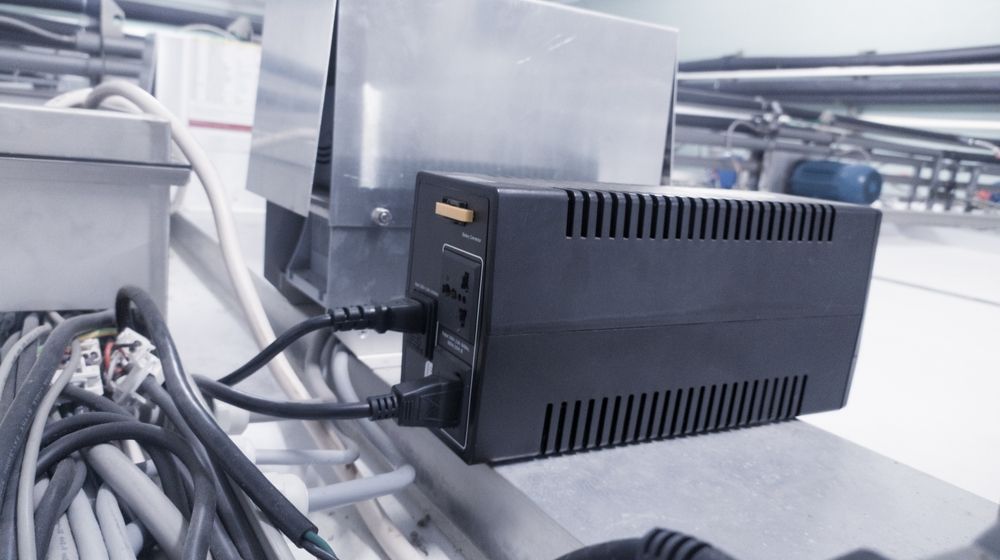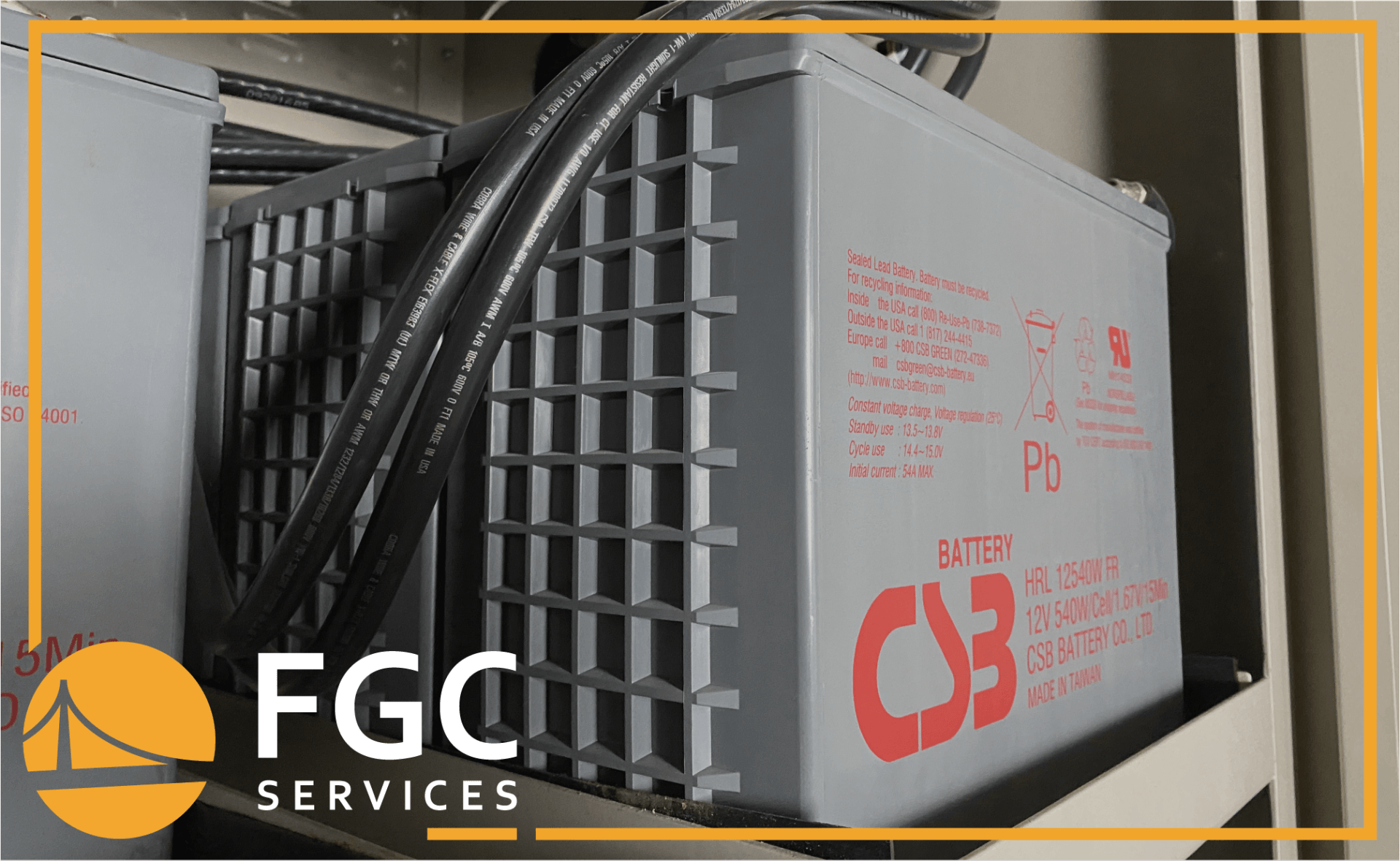UPS Fire Risk: Ways To Prevent Electrical Fires
23 August 2024
Share this article:

UPS systems in commercial and industrial settings power devices to allow for safe shutdowns of equipment. They also provide workers with the time needed to perform troubleshooting of power systems or to activate generators. However, a UPS unit can pose a fire risk when not properly maintained.
Key Takeaways
- Overheating and electrical faults are the two main causes of UPS fires.
- Periodic maintenance should be done to both the UPS unit and battery system.
- Smart monitoring and centralized management of UPS units can prevent future electrical fire dangers.
What Can Cause a UPS to Catch Fire?
Like any other device in your facility, UPS systems experience a build-up of heat that can cause components to catch fire. They can also give off electrical shocks ranging from 100mA up to more than 2,000mA that could lead to electrical burns. While these are two main problems of what could create a UPS fire risk, there are various sources that can lead to these two causes.
Overheating could be the result of dust or lack of airflow. Components generate heat when in operation. For a UPS system, depending on the type, it can be constantly on to help monitor the current flow for systems, charge the batteries, and clean up "dirty power" for equipment. When dust covers the components, the dust creates a thick coating around air ducts and vents. The heat inside the casing has no means to escape, leading to too much heat build-up. This excessive heat can cause components and dust to catch fire.
The location of the UPS system and high room temperatures can also cause the UPS unit to overheat. You may have the UPS situated in a location where other components or even the wall blocks off or impedes air flow from the vents. These obstructions prevent the heat inside the UPS from becoming expelled by the fan. Also, if the room is excessively hot or the room's cooling system fails, the hot temperatures in the room along with the hot temperatures in the UPS can create issues.
Electrical faults happen when there is a problem with the electrical flow. Some common types of electrical faults include arcing, short circuits, or battery overcharging. Arcing, also called an arc flash, occurs when several pieces of equipment become energized. The conductor gives off electrical energy that moves through the air to another conductor to cause an electrical flash. This arcing creates a large amount of heat that can cause objects to explode or combust.
Short circuits are another type of electrical fault that could cause a potential UPS fire risk. A short circuit happens when the electrical current flows in the wrong direction. This issue can cause equipment to overload, which leads to excessive heat and explosions. Battery overcharging occurs when there is an excessive float voltage. If the electronics that control the float charge fail due to damage, it could cause the battery to overcharge and combust.
UPS Fire Risk Management Tips
Preventive maintenance is the top priority when it comes to preventing issues that could create a UPS fire risk. This maintenance should focus on both the UPS system as well as the battery. UPS maintenance consists of inspecting components for possible issues, replacing parts with excessive wear-and-tear or damage, and cleaning out dust.
UPS battery maintenance should look for physical problems with the battery, including swelling and leakage, as well as reduced battery capacity and runtime. Additional fire risk management tips would include checking the vent openings for any obstructions from other equipment or objects.

You also want to monitor the room temperatures to ensure cooling systems reach the UPS unit. You can also obtain a UPS unit that features monitoring functions and alarms that can warn you of potential issues between maintenance inspections.
Another UPS fire risk management tip involves providing additional safety devices. If your operations deal with excessive power surges or voltage spikes, connecting additional surge protection equipment in conjunction with the UPS unit can provide extra protection. Another layer of equipment monitoring can provide timely alerts to potential issues if the UPS system itself experiences a failure.
How UPS Systems Prevent Electrical Fires?
A well-maintained UPS system can also help to prevent electrical fires. Some of these features are included as part of the UPS system, while others are future innovations.
Engineers are looking into technologies to design UPS units with smart tech that can integrate with other smart devices in the facility, such as fire protection systems, smoke alarms, and other connected emergency equipment. This integration also involves constant, real-time monitoring through cloud platforms and mobile applications. You can manage UPS data and reports through remote devices for faster repair responses and system shutdowns to create a safer working environment.
With smart UPS functions and features, the units can detect power anomalies, excessive wear to components, battery issues, and high temperatures. A range of actions can then be taken, such as sending alerts to workers, sounding alarms, cutting power to batteries to prevent overcharging, or safely powering down connected devices.
Bottom Line
A UPS system is designed to provide backup power for your facilities in case of power blackouts, surges, or other anomalies. However, these systems also need to be managed to prevent safety risks such as fire hazards.
Depending on your power needs, you want to size the UPS system to your energy load to ensure it can provide the required emergency power. Then you want to install the unit properly and develop a periodic maintenance plan to inspect and repair the UPS to address the common causes of UPS fire risks, such as overheating and electrical faults. Constant monitoring done by both the UPS unit and by workers can prevent small problems from becoming larger safety issues.
Connect with Us:





